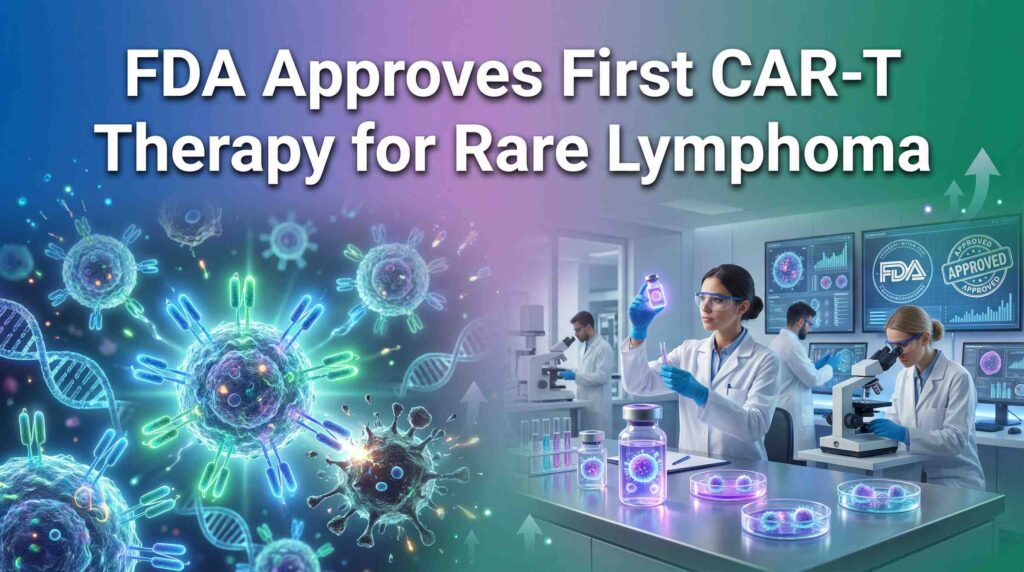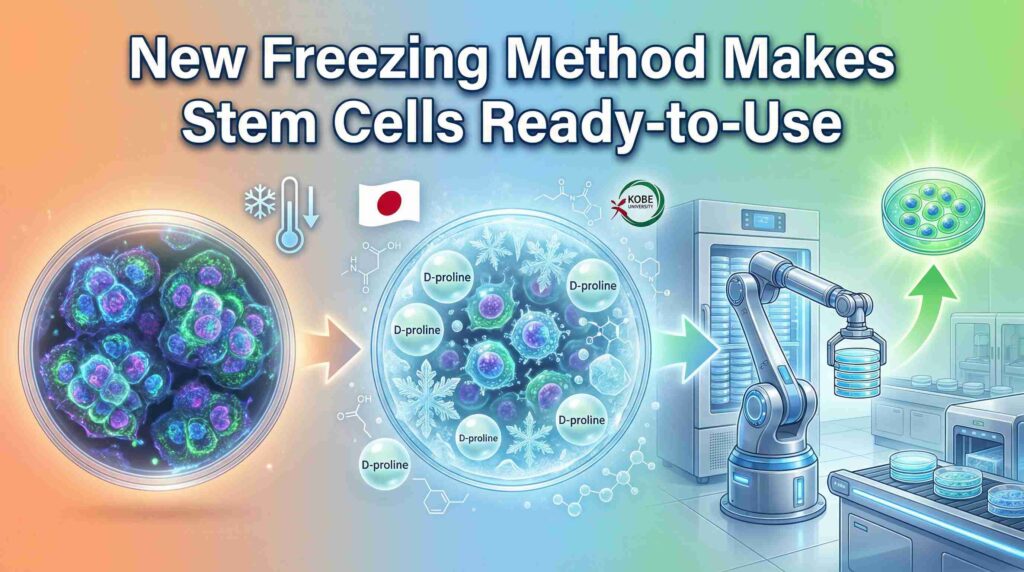Hello there, future parents! Congratulations on the upcoming addition to your family. There’s a lot to think about when you’re expecting, isn’t there? From choosing the right stroller to deciding on the color of the nursery. But today, let’s chat about something a bit more scientific, yet equally important – umbilical cord blood banking and regenerative medicine. I know, it sounds like something straight out of a sci-fi novel, but trust me, it’s not as intimidating as it sounds.
You see, the birth of your child brings not just joy, but also a unique opportunity. The blood within your baby’s umbilical cord (the cord connecting the mother and the baby during pregnancy) is a rich source of special cells known as stem cells. These aren’t your run-of-the-mill cells, mind you. They have a remarkable capacity to develop into different cell types – think heart cells, brain cells, and so on. They’re like the multi-talented artist of the cellular world!
This ability of stem cells has given rise to a field called regenerative medicine, an exciting area of healthcare that focuses on repairing or replacing damaged tissues and organs. Imagine, for instance, a world where a heart attack isn’t the end of the road but just a bump, thanks to a heart tissue made from stem cells. Sounds like magic, doesn’t it? But it’s not – it’s science!
Now, where do umbilical cord blood banking and regenerative medicine intersect, you might ask? Well, that’s precisely what we’re here to explore. So, buckle up and join us as we navigate this fascinating world of stem cells, cord blood banking, and their potential in regenerative medicine. The journey promises to be as intriguing as it is informative!
What is Umbilical Cord Blood and Why is it Special?
Now, before we dive into the deep end, let’s start with the basics. What is umbilical cord blood, and why is everyone in the medical community buzzing about it?
The umbilical cord is your baby’s lifeline during pregnancy, connecting your baby with your placenta. It delivers nutrients and oxygen from you to your baby and carries away waste from your baby. So, essentially, it’s the baby’s first room service and waste management system! Now, once your baby is born, this cord is clamped and cut, and normally, it would be discarded along with the placenta. But here’s where things get interesting.
The blood left in the umbilical cord and the placenta after birth is brimming with what we call ‘stem cells.’ Now, these aren’t just any cells. They’re like the superheroes of the cell world. Why, you ask? Because they have two unique abilities. First, they can self-renew, meaning they can divide and create more stem cells. And second, they can differentiate, which is a fancy way of saying they can transform into other types of cells. Imagine a cell that can turn into a blood cell, a brain cell, or even a heart cell. That’s right, these cells can potentially be anything they want when they ‘grow up’!
So, in essence, umbilical cord blood is special because it’s a rich source of these superhero stem cells. They’re kind of like the golden ticket in Charlie and the Chocolate Factory – they hold a lot of potential. And this potential is what has sparked the interest of doctors and scientists around the world, leading to the concept of cord blood banking. But we’ll get into that a bit later.
For now, picture this: It’s like nature has packed a little treasure box of potential inside the umbilical cord blood, waiting to be discovered and put to use. Now isn’t that something special?
The Science of Cord Blood Stem Cells
Alright, now that we’ve established that cord blood is our treasure box, let’s delve deeper into these unique stem cells it houses.
You might be wondering, “What makes cord blood stem cells so special, and why can’t we just use any old cell from our bodies?” Great questions!
You see, the stem cells found in cord blood are called hematopoietic stem cells (HSCs). These are the ones responsible for producing all the different types of blood cells in our body, which includes red blood cells (the ones carrying oxygen), white blood cells (our body’s defense system), and platelets (the ones that help in clotting and healing). And, as we mentioned earlier, these cells are like the superheroes of the cell world. They can self-replicate and differentiate into other cell types, which is a pretty big deal.
Now, imagine for a second that your body is a town, and the different types of cells are the various citizens going about their business. In this town, the cord blood stem cells are like the town’s founders. They can not only replicate themselves but also give rise to the entire population of the town. This ability to give rise to different types of cells is what sets stem cells apart from other cells and makes them so valuable in medicine.
But wait, there’s more! Cord blood stem cells are also younger and more flexible compared to adult stem cells from other parts of the body. Picture them as being more ‘open-minded’ about their future career paths. This makes them more adaptable when transplanted into a new body, reducing the likelihood of complications.
In a nutshell, cord blood stem cells are like a ‘reset’ button for our body’s cellular system, offering potential treatments for a variety of diseases. And this, dear readers, is just the tip of the iceberg. The potential of these cells is vast and exciting, and it’s the cornerstone of a field you might have heard of: regenerative medicine. But let’s not get ahead of ourselves. We’ll talk more about that in a bit.
Umbilical Cord Blood Banking
Now that we’ve unpacked the science behind cord blood stem cells, it’s time to dive into the concept of cord blood banking. Picture it as a sort of “savings account” for your child’s future health.
So, what exactly is cord blood banking? Simply put, it’s the process of collecting and storing the blood from your baby’s umbilical cord soon after birth. Remember the treasure box we talked about? Well, cord blood banking is like finding that treasure box and then storing it in a super-secure vault for potential future use.
The process of collecting cord blood is straightforward and painless, both for the mother and the baby. Shortly after your baby is born, and the umbilical cord is clamped and cut, the remaining blood in the cord is collected. This blood is then processed and cryopreserved (frozen) in a cord blood bank.
Now, there are two main types of cord blood banking: public and private. With public banking, you donate your baby’s cord blood, and it’s available for anyone who needs a stem cell transplant. It’s like making a charitable donation that could potentially save someone’s life.
On the other hand, private banking means the cord blood is exclusively preserved for your family. It’s like having an insurance policy, just in case your child or a family member ever needs those stem cells in the future.
Let’s consider a hypothetical situation. Suppose your little one, God forbid, develops a condition later in life that can be treated with their cord blood stem cells. If you’ve banked these cells, they’d be readily available for treatment. It’s like having a personalized medical kit, tailor-made for your child’s DNA!
Of course, cord blood banking isn’t without its considerations, such as the cost of private banking or the fact that the use of cord blood stem cells, while promising, is still being explored in many areas of medicine. But that’s a discussion for another section.
For now, just imagine cord blood banking as a unique opportunity to potentially safeguard your child’s future health. It’s a bit like planting a tree: a small act today could lead to significant benefits down the road.
Regenerative Medicine and Cord Blood
Now that we’ve talked about cord blood and cord blood banking, let’s connect the dots to a thrilling field of medicine that’s almost like science fiction come to life – regenerative medicine.
Regenerative medicine is all about repairing, replacing, or regenerating damaged cells, tissues, or organs to restore or establish normal function. It’s like having a construction crew that can rebuild a damaged building from scratch. And guess who’s at the heart of this construction crew? That’s right, our superhero stem cells!
Cord blood stem cells, with their flexibility and ‘can-do’ attitude, are at the forefront of this field. They are being used and studied for their potential to treat a variety of diseases and conditions.
For example, cord blood stem cells are already being used to treat over 80 diseases, including certain cancers, immune disorders, and blood disorders. Remember our friend George? His life was changed thanks to these superhero cells.
But the potential goes far beyond these uses. Researchers are exploring the use of cord blood in regenerative medicine for conditions like autism and cerebral palsy. And it’s not just diseases. Imagine being able to heal a severe burn with new skin grown from stem cells or repair a damaged heart after a heart attack.
These are the kinds of breakthroughs that the field of regenerative medicine is striving for, and cord blood stem cells are key players in this mission. The research is ongoing, and while we can’t say for sure what the future holds, the possibilities are undoubtedly exciting.
In a nutshell, cord blood and regenerative medicine together open a door to a world of potential treatments and cures. And that’s something worth considering as you prepare to welcome your little one into the world.
Making the Decision: Considerations for Expectant Parents

Okay, so we’ve covered a lot of ground, and you might be thinking, “This sounds great, but how do I decide if cord blood banking is right for my family?” Well, you’re in the right place, because that’s exactly what we’re going to talk about now.
Deciding whether to bank your baby’s cord blood is a personal decision and one that requires careful thought. It’s a bit like choosing between a minivan and a compact car. Both have their pros and cons, and the best choice depends on your family’s needs and circumstances.
First, let’s talk about the potential benefits. As we’ve discussed, cord blood stem cells have unique properties and can be used to treat certain diseases. If a family member has a known genetic condition that could potentially be treated with stem cells, banking cord blood could provide a valuable resource.
But remember our friend George and little Emma’s stories? They’re not the norm but rather the best-case scenarios. The likelihood that your child will need their cord blood is small. It’s estimated to be between 1 in 1,000 to 1 in 200,000. So, while cord blood banking provides a sort of biological insurance, it’s important to consider the chances of needing to cash in on that policy.
Another important factor to consider is cost. Private cord blood banking can be quite expensive. There’s usually an initial fee for collection and processing, and then there’s an annual storage fee. It’s a bit like buying a car. There’s the upfront cost, and then there are the maintenance and insurance costs to keep in mind.
Lastly, it’s important to remember that while the potential of cord blood is vast, many of its proposed uses are still in the research stage. Regenerative medicine, while promising, is a relatively new field, and many of the potential therapies are still being tested and aren’t guaranteed.
Making this decision might feel overwhelming, like deciding on the perfect baby name or the right school. But just like those choices, the best decision will depend on your family’s personal situation, values, and resources. It’s important to weigh the potential benefits against the costs and to discuss this decision with your healthcare provider.
Remember, whatever decision you make will be the right one for your family. As you prepare to welcome your little one into the world, know that every decision you make out of love and care is the right one.
Conclusion
And there you have it – a whirlwind tour through the world of umbilical cord blood, cord blood banking, and regenerative medicine.
We’ve journeyed through the science of cord blood stem cells, why they’re considered the superheroes of the cellular world, and how they’re changing the face of medicine. We’ve explored the process of cord blood banking, comparing it to a unique ‘savings account’ for future health. We’ve also delved into the thrilling realm of regenerative medicine, painting a picture of a future where diseases could be treated and damaged tissues repaired using these very stem cells.
Indeed, the intersection of cord blood banking and regenerative medicine is like a frontier town on the cusp of a gold rush. It’s a field brimming with promise and potential, and your baby’s birth presents a unique opportunity to be part of this medical frontier.
But at the end of the day, whether or not to bank your baby’s cord blood is a personal decision. It’s a decision that involves weighing the potential benefits, costs, and the future of medical advancements. It’s a decision best made with ample information, thoughtful consideration, and guidance from trusted healthcare providers.
As you stand on the cusp of parenthood, remember that the best choices are those made out of love and care for your child. Whether you choose to bank your child’s cord blood or not, know that you’re already doing a great job by exploring your options and making informed decisions.
Congratulations once again on this exciting journey you’re embarking on. Parenthood is a remarkable adventure filled with countless decisions, big and small. And through it all, remember that every step of this journey, every decision made, is a testament to the incredible love you have for your child. Here’s to the amazing journey ahead!
Additional Resources
As we wrap up our exploration of umbilical cord blood, cord blood banking, and regenerative medicine, here are some additional resources to help you continue your research. These will provide you with more detailed information and up-to-date developments in these fields:
- Parent’s Guide to Cord Blood Foundation: An excellent resource for parents considering cord blood banking. The site offers comprehensive information, recent news, and a list of cord blood banks worldwide. www.parentsguidecordblood.org
- National Cord Blood Program: Managed by the New York Blood Center, this website provides information about donating cord blood to a public bank. www.nationalcordbloodprogram.org
- Cord Blood Association: An international nonprofit organization that promotes both public and private cord blood banking. The site provides resources for parents, health professionals, and researchers. www.cb-association.org
- Be The Match: Run by the National Marrow Donor Program, Be The Match offers information about cord blood and the donation process. bethematch.org
- American Society for Gene & Cell Therapy: This organization provides information about the latest research in gene and cell therapy, including the use of cord blood in regenerative medicine. www.asgct.org
Remember, knowledge is power, and these resources can empower you to make the best decision for your family. As you continue your journey into parenthood, may these resources guide you and provide the information you need to navigate the exciting world of cord blood banking and regenerative medicine.


